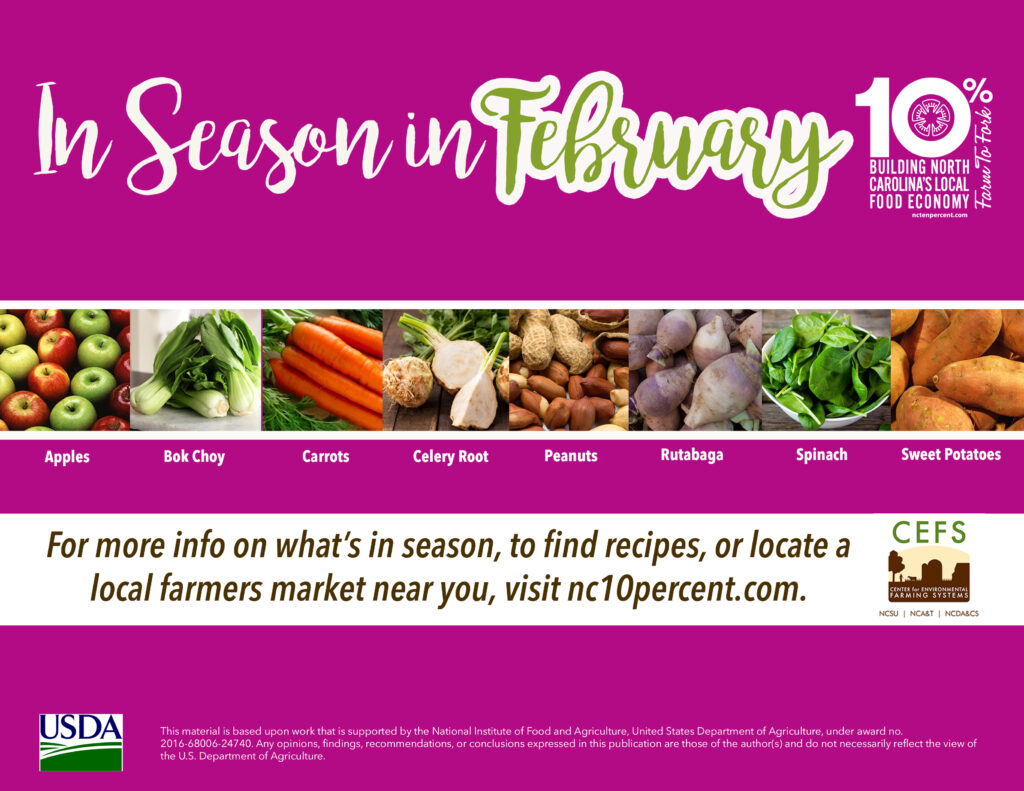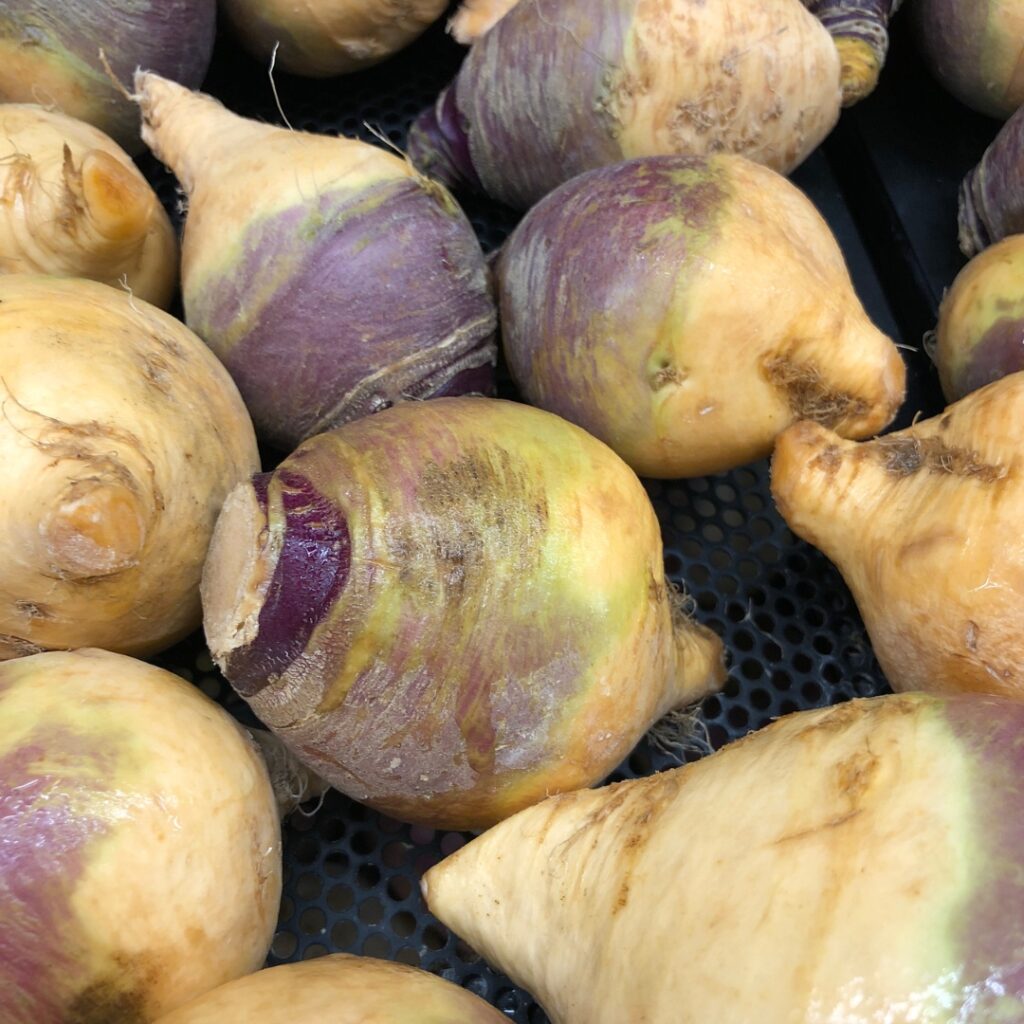It’s February! What’s in Season?
go.ncsu.edu/readext?983939
en Español / em Português
El inglés es el idioma de control de esta página. En la medida en que haya algún conflicto entre la traducción al inglés y la traducción, el inglés prevalece.
Al hacer clic en el enlace de traducción se activa un servicio de traducción gratuito para convertir la página al español. Al igual que con cualquier traducción por Internet, la conversión no es sensible al contexto y puede que no traduzca el texto en su significado original. NC State Extension no garantiza la exactitud del texto traducido. Por favor, tenga en cuenta que algunas aplicaciones y/o servicios pueden no funcionar como se espera cuando se traducen.
Português
Inglês é o idioma de controle desta página. Na medida que haja algum conflito entre o texto original em Inglês e a tradução, o Inglês prevalece.
Ao clicar no link de tradução, um serviço gratuito de tradução será ativado para converter a página para o Português. Como em qualquer tradução pela internet, a conversão não é sensivel ao contexto e pode não ocorrer a tradução para o significado orginal. O serviço de Extensão da Carolina do Norte (NC State Extension) não garante a exatidão do texto traduzido. Por favor, observe que algumas funções ou serviços podem não funcionar como esperado após a tradução.
English
English is the controlling language of this page. To the extent there is any conflict between the English text and the translation, English controls.
Clicking on the translation link activates a free translation service to convert the page to Spanish. As with any Internet translation, the conversion is not context-sensitive and may not translate the text to its original meaning. NC State Extension does not guarantee the accuracy of the translated text. Please note that some applications and/or services may not function as expected when translated.
Collapse ▲
 When you pass by the rutabagas at the farmers market, a produce stand or even in the grocery store they don’t exactly stand out as that one thing you just have to have. These giant, round, purplish white roots with yellow flesh just don’t have that curb appeal or familiarity that other root vegetables have. Their purple color causes some to confuse them with the Turnip (which has white flesh). If you taste one raw you will get hints of turnips and cabbage. Anywhere you can use a potato you can use this winter root vegetable but unlike the potato, the rutabaga has more to offer nutritionally. Rutabagas have half the carbohydrates, half the calories and four times the fiber of potatoes. They also have higher amounts of vitamin C, calcium, magnesium and B vitamins.
When you pass by the rutabagas at the farmers market, a produce stand or even in the grocery store they don’t exactly stand out as that one thing you just have to have. These giant, round, purplish white roots with yellow flesh just don’t have that curb appeal or familiarity that other root vegetables have. Their purple color causes some to confuse them with the Turnip (which has white flesh). If you taste one raw you will get hints of turnips and cabbage. Anywhere you can use a potato you can use this winter root vegetable but unlike the potato, the rutabaga has more to offer nutritionally. Rutabagas have half the carbohydrates, half the calories and four times the fiber of potatoes. They also have higher amounts of vitamin C, calcium, magnesium and B vitamins.
For more information on healthy food choices and getting in those 3- 5 servings of fruits and vegetables a day check out MyPlate or you can always call 828-456-3575 or email me, Julie_Sawyer@ncsu.edu at Haywood Cooperative Extension.
The biggest challenge in preparing rutabagas is peeling them. The hard waxy peeling is easiest to remove if you cut the root vegetable into sections that will lay flat, then you can peel top to bottom safely. As I mentioned before, rutabagas can be used in any recipe you would use potatoes in. My favorite way to cook any root vegetable is to roast it on high heat. Give them a try for the health of it!
Roasted Rutabagas
- Preheat oven to 400° F.
- Cut 1, 4 inch peeled rutabaga into 1 inch cubes.
- Toss in 1 Tbs. of olive oil.
- Sprinkle with a little salt and pepper, a pinch of chili pepper, some fresh rosemary if you have it.
- Roast on a foil covered sheet pan at 400° F until caramelized and tender.
- Enjoy!




